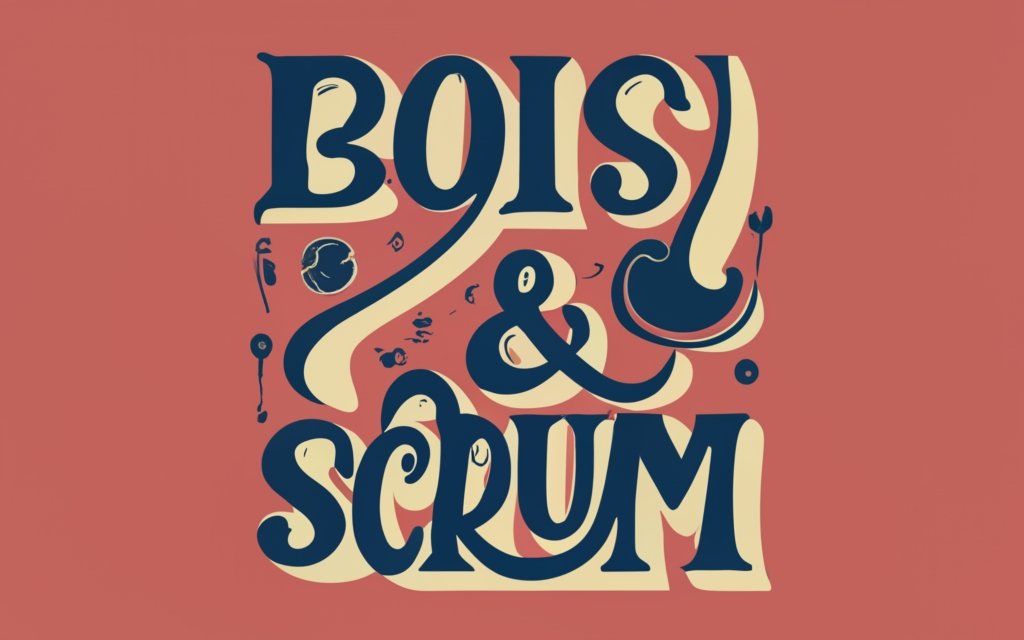The Scrum framework has become widely adopted by organizations seeking to deliver value quickly in complex, rapidly changing environments. However, simply implementing the Scrum practices is not enough.

To fully realize the benefits of Scrum, organizations must focus on continuously improving behaviors that drive results. This is where the Behavioral Objectives Impact Sustainability (BOIS) model can provide immense value.
Developed by change experts at Enterprise Agility University, the BOIS model offers a systemic approach for identifying, measuring and optimizing crucial behaviors tied to objectives. By linking behaviors to obejctives, impact, and sustainability, it promotes actions that tangibly advance the organization. Let's explore how integrating the BOIS model into Scrum can accelerate development, enhance adaptability, and boost delivery of client, company and employee value.
Identifying Key Behaviors
A common challenge Scrum teams face is lack of alignment around priorities leading to disparate tasks that fail to advance the product vision. The Product Owner may have an intended goal, yet the Development Team focuses on components that don't clearly contribute. This results in disjointed efforts rather than coordinated behaviors driving toward the objective.
The BOIS model helps solve this through a participatory process engaging the Scrum Team and stakeholders to pinpoint high-impact behaviors tied to the goals for each sprint and release. For example, for a sprint focused on enhancing user experience, key behaviors may include gathering rapid user feedback, designing interactions collaboratively, or simplifying steps in the user journey. Potential Change to Scrum Practice: Have a BOIS-focused session during Sprint Planning to align around key behaviors.
Measuring Behavioral Impact
Once key behaviors are identified, the next step is developing metrics to gauge their impact and contribution to the desired outcomes. This allows the Scrum Team to assess what actions had the most substantial effect on moving the product forward for customers and the company. For the user experience example above, metrics could include user satisfaction scores, conversion rates, or number of steps reduced in critical workflows. Quantitative data provides evidence of which behaviors to continue reinforcing. Potential Change to Scrum Practice: Add a BOIS metrics review to the Sprint Retrospective.
Sustaining Behaviors Over Time
A common pitfall in Scrum is that early progress might make teams complacent. Momentum slows as they check the standard boxes without considering how to sustain key behaviors over time. Here the BOIS model really shines.
By reviewing data on impact regularly, the Scrum Team can discern when certain behaviors are slipping that may require new interventions to reinvigorate. They can proactively change environmental components to make the high-leverage actions easier to take consistently. This builds a culture of learning and continuous improvement into the team's rhythm. Potential Change to Scrum Practice: Make BOIS behaviors and metrics highly visible information radiators.
As you can see, the BOIS model is a highly complementary framework to enhance Scrum. It provides the missing piece of optimizing patterns of action tied to objectives that persist over time. Integrating BOIS builds alignment, accelerates results, and sustains high performance even as team composition and priorities shift. By implementing BOIS within their sprints, ScrumMasters can truly maximize delivery of value and maintain a motivated, engaged Development Team.
The BOIS Model Transforms Behaviors Across the Organization
While the examples above focus on product development, the BOIS model has applications across the entire company. Every leader can identify critical behaviors for their department and staff using the BOIS lens. When individual units optimize actions tied to their objectives, it creates an organizational multiplication effect.
Imagine a marketing team using BOIS to double leads generated or an HR group using it to halve employee turnover. The organizational impact is immense. By creating alignment around high-priority behaviors, enterprise agility emerges, and client, company, and employee value accelerates exponentially.
In a volatile world, competitive advantage comes from empowering people to adapt behaviors that continuously drive results with low stress-levels. This is the crucial aspect of combining BOIS with frameworks like Scrum. Implemented together, they create a highly agile organization able to navigate change and unlock sustainable growth.
